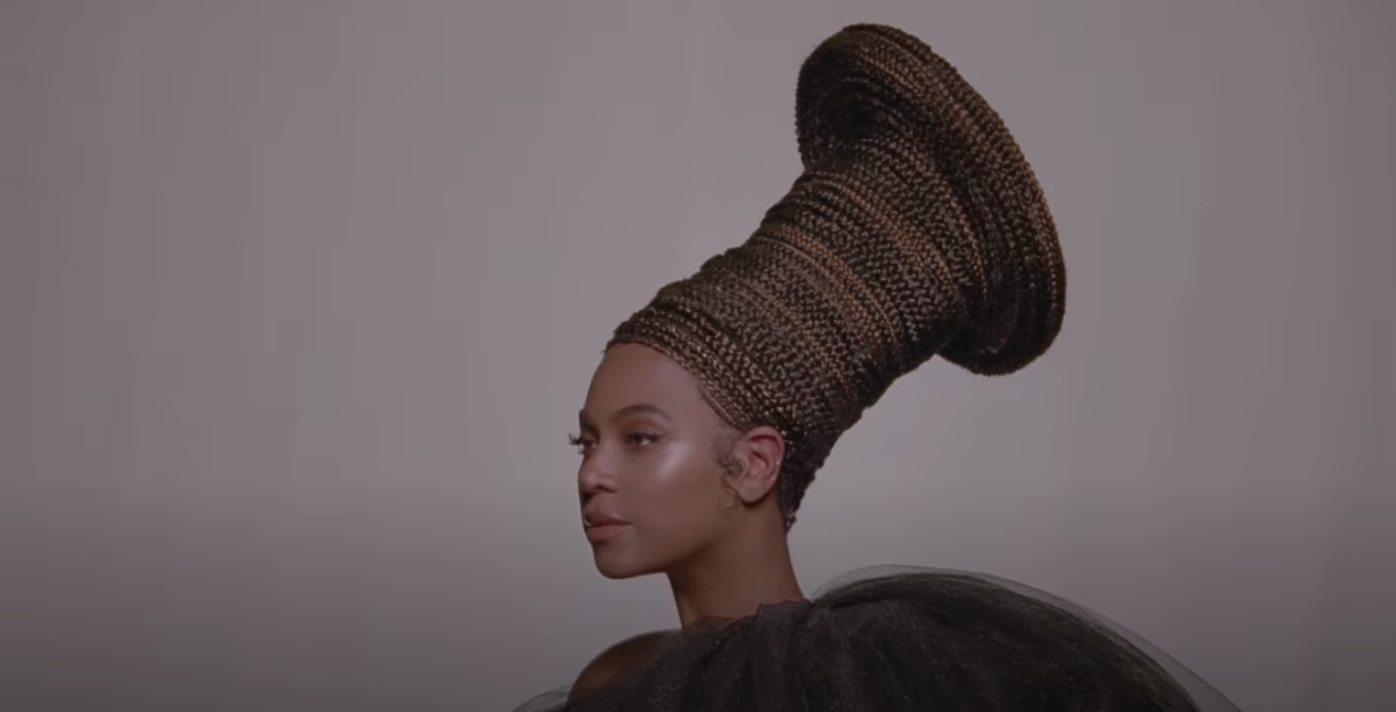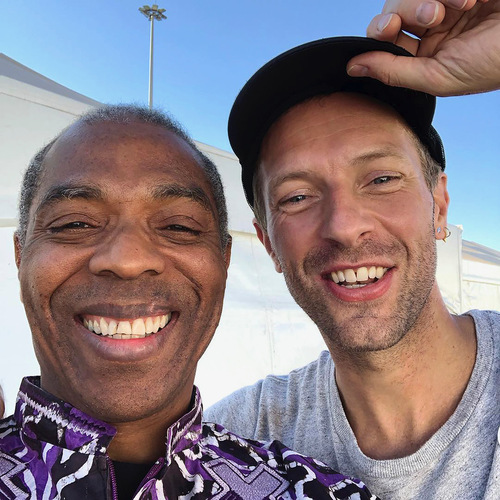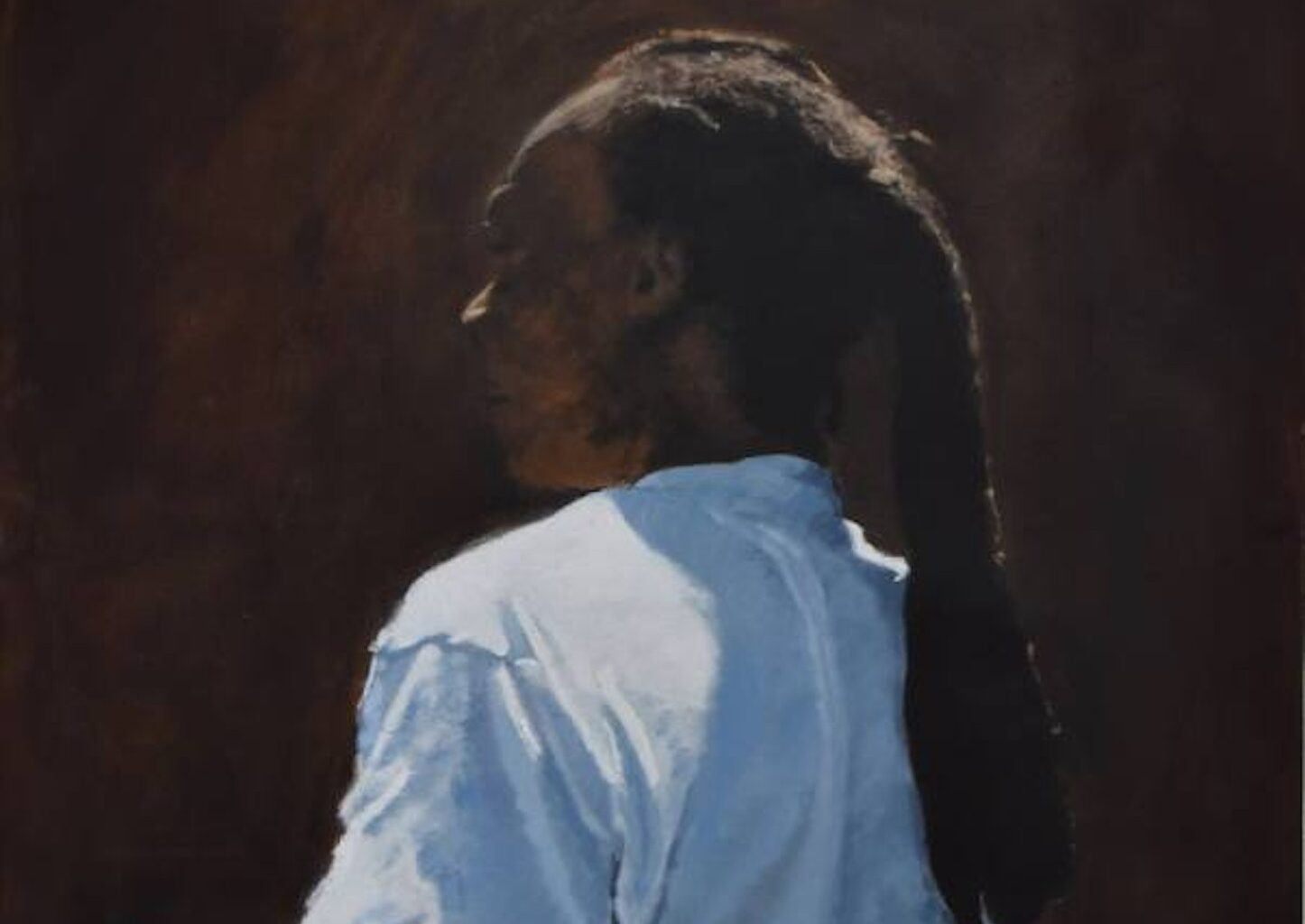Above: Beyoncé Knowles-Carter, Walt Disney Studios/YouTube
In 2013’s “Picasso Baby,” Jay-Z proclaims, “It ain’t hard to tell I’m the new Jean Michel.” His entire Magna Carta…Holy Grail album is full of fine art references. Jay-Z boasts that Beyonce is his Mona Lisa, “a modern-day version with better features.” The 2018 video of The Carter’s single “Apeshit” features the couple standing hand in hand in front of the famed Mona Lisa. The entire Lurve becomes their playground; Black dancers in flesh tones grace the museum’s floors, partially blocking art on the walls. Beyonce and Jay-Z declare that we are art, make way.
Beyoncé and Jay-Z are Black art collectors, who celebrate artists whose work is recognized by the cannon and introduce artists who have yet to have such visibility. From New York to Houston, the Carter’s carry their roots, which undoubtedly informs their work. For the film Black is King, Beyoncé digs deeper into her roots, looking toward the African continent for inspiration and collaboration. In the September 2018 issue of Vogue, Beyoncé credits her love of Black art to her mother, Ms. Tina Knowles-Lawson. Ms. Tina serves as the curator for “Mood 4 Eva”, within Black is King.
The video for “Mood 4 Eva” is quintessential Disney–– musical, decadent, expressive, and full of royal iconography. However, it is distinctly Beyoncé–– Black in gesture, humor, and style. The visual essence is matched with Jay-Z’s lyrics, “Mansa Musa reincarnated.” The mood is opulence. The video’s background is similar to Villa Lewaro, Madam C.J. Walker’s infamous estate. At the Villa, Walker invited Black leaders from across the Diaspora to share political discourse, culture, and cuisine, the highlife. In Beyoncé’s kingdom, all the Diaspora’s children reign in their own right.
“MOOD 4 EVA”
As Jay-Z pulls into the driveway, we see cuts to sculptures by Woodrow Nash. Nash’s work, like all others featured, is a storytelling device. Each artist’s practice reflects the central story, mood, and message of the film. Nash coined “African Nouveau” to describe his blend of 15th century Benin and 18th century French Nouveau aesthetics. The creolization of symbols, colors, textures, and other adornments found both in his sculptures’ clothing and skin speak to the spirit. Beyoncé, through her stylized Orisha reference in costume and language, aided through the poetry of Warsan Shire, highlight African spirituality and religion.
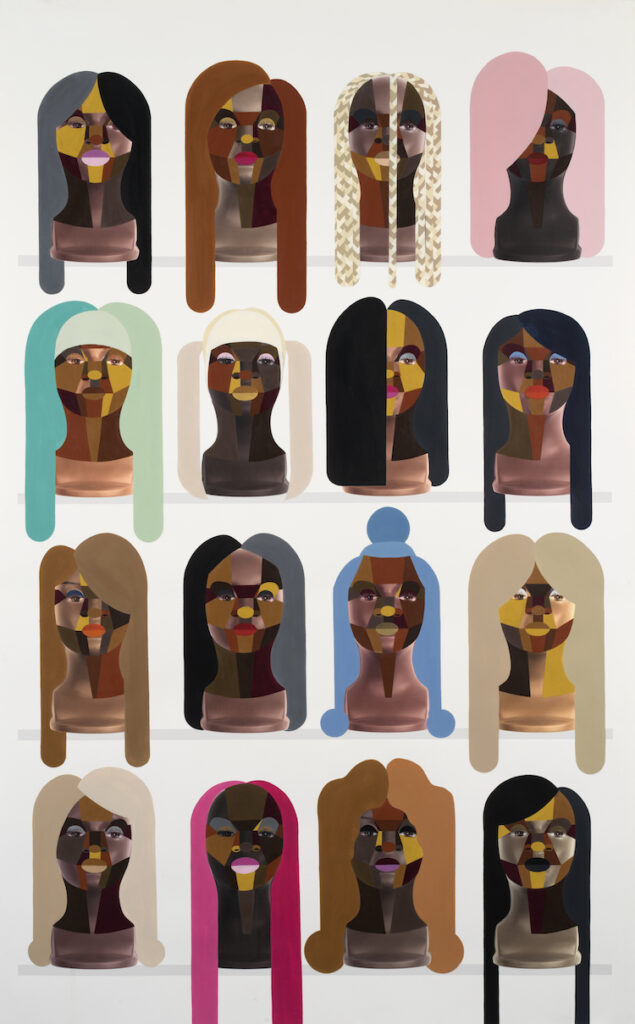
As we enter the mansion, the hallway exhibits works from Derrick Adams’ 2019 series, Beauty World. Beauty World was inspired by Adams’ observation of beauty and nail shops in Brooklyn, Jay-Z’s hometown. Adams’ and Beyoncé investigate and celebrate Black hair’s beauty and its ability to hold history and ritual. In particular, one work stands out, a multi-colored face collaged with geometric shapes and black and white box braids. The face holding a colorful palette of fragmented forms is crowned by a black and white framing. Similarly, “Mood 4 Eva” pushes against the liminality of “black and white” racial stereotypes. It displays the joyous and fantastic, moving from monochromatic imprisonment to the inner layers of liberating, vibrant color.
Sisters Solange and Beyoncé bring Houston to their imaginaries. Fellow Houstonian Robert Pruitt is also featured in the home and was featured in Solange’s 2019 visual album When I Get Home. Pruitt’s Afrofuturist work is befitting for this film that travels realms of time and space. Pruitt’s work connects the Diaspora through the reference of technology, hip-hop, and spirituality; essentially, major cues of the film. Timothy Washington’s Afrofuturist work are also featured. His assemblage renews the old, lost, or discarded. Beyoncé is crowned Mother Mary with her cherub buzzing about. As we move throughout the home, glimpses of other works graze the screen, not all in clear, legible view.
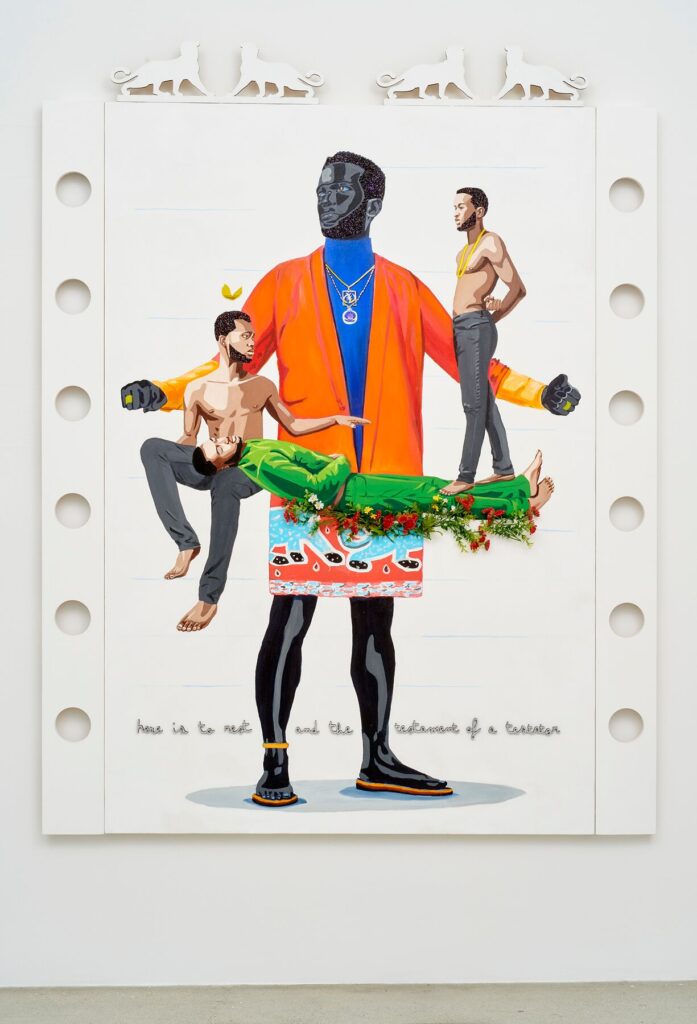
A few scenes later, Beyoncé lounges on a loveseat, backgrounded by Ghanian artist Conrad Egyir’s Paragons of Rest. The Steadfast and Luxuriate. Egyir’s portraits tease biblical references, American popular culture, and references from his tribe, the Ashanti. His “mood” is guided by lesser-known histories and a spirituality buried under colonialism and scattered during the Trans-Atlantic Slave Trade. Beyoncé and the artists within “Mood 4 Eva” look backward and beyond for reference, compounding meaning by including their experience.
“WATER”
The entire film has incredible hairstyling; however, the hair, particularly in “Water,” is breathtaking. The braid work is fabulous, a la Laetitia Ky. Ky, a hair Ivorian hair sculpture raised to Instagram influence in 2019 with her set of hands made of her hair. The scene closes with Beyoncé crowning rapunzel length braids. “Water” well prepares us for the critical role of hair in “Brown Skin Girl,” which features natural styles, 1950’s Nigerian pin-ups, and hijabs.
“BROWN SKIN GIRL”
While “Mood 4 Eva” features contemporary Black artists, the entire film references other visual creators. “Brown Skin Girl” is full of cameos, including Kelly Rowland, Naomi Campbell, Blue Ivy, and Lupita N’yong’ o. Two Black women who are not in the film, but whose presence is felt are Carrie Mae Weems and Deana Lawson. The stills of children, couples, and families visually and emotively evoke Weems and Lawson’s photography.
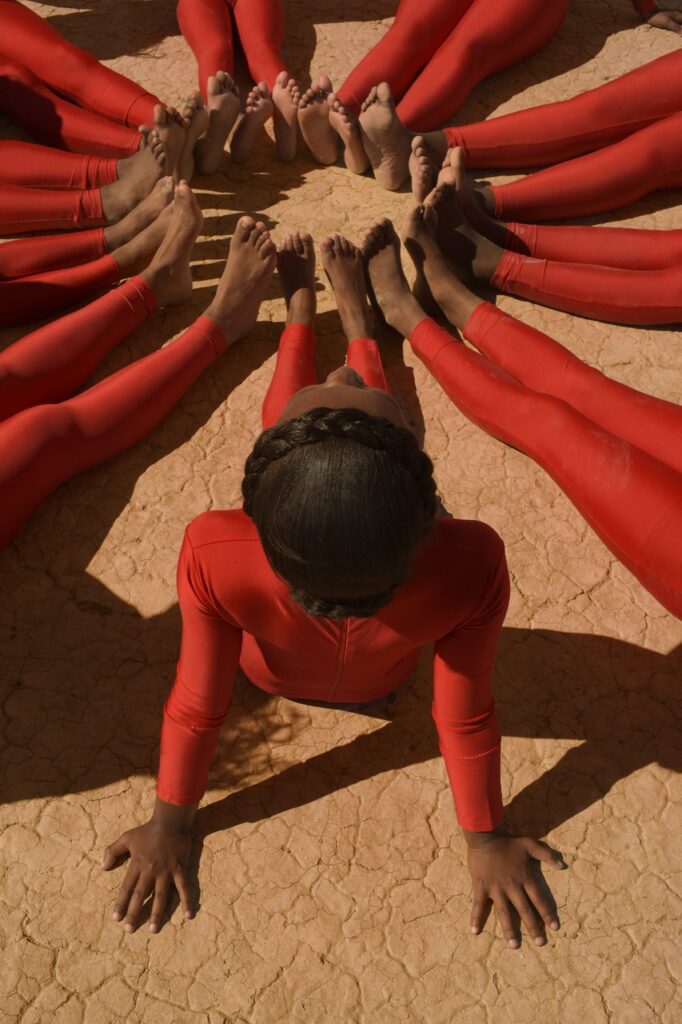
Throughout the film, Ethiopian photographer Aïda Muluneh’s influence is found in bold garments, body paints, and immersive land spaces. Muluneh’s work aims to showcase Africa’s beauty outside of colonialism’s lingering remnants and its presentation in mass media. Black is King also shows Africa not frequently seen in media, especially in programs that reach children. The Afrofuturism of Black is King provides Black children an affirming space, for they too have tales, lore, and imagination where characters look like them.
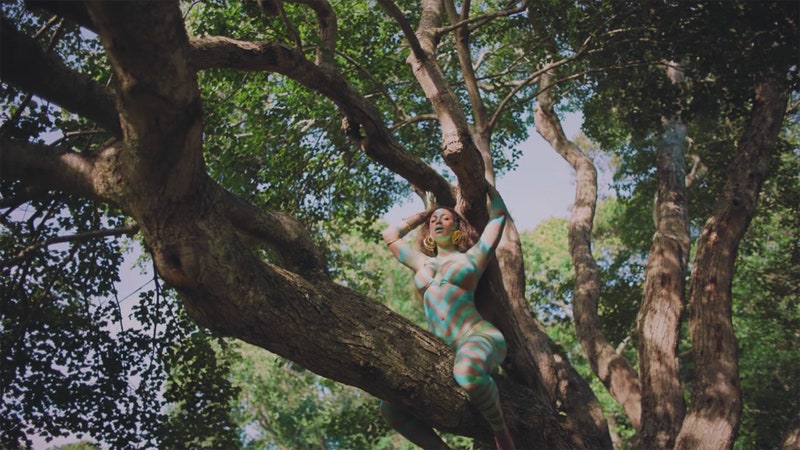
The turquoise painted cast in “Already” references a staple of Woodrow Nash’s sculptures. Beyoncé’s turquoise stripes painted by Michela Wariebi, and her custom Loza Maleombho Black and White striped set also reference Nash. At the end of “King Already,” a flag, similar to David Hammon’s African-American Flag, is held by a group of men. The shot cuts between this flag and the Ghanaian flag. “Remember who you are” is repeated as both flags are raised with pride. The symbolic red, black, and green are from Marcus Garvey’s Pan-African Flag, firstly introduced in 1920. A century later, these colors reinvite Diasporic connections and unity in Beyoncé’s world. The film and album continue the Pan-African cultural tradition; hundreds of designers, artists, actors, and musicians of the Diaspora collaborated to craft this celebratory, culturally rich experience,
“MY POWER”
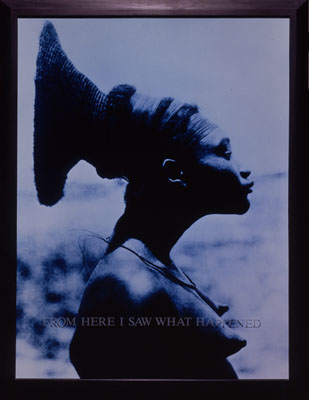
In “My Power,” Tierra Whack’s Black gown and headdress mirror silhouettes of sculptural work in Simon Leigh’s 2018, Loophole of Retreat exhibit. In the same video, Beyoncé is crowned with braids similar to those found in Carrie Mae Weems’ From Here I Saw What Happened. The inspiration is befitting. In the film, Beyoncé is appropriating and uncovering cultural remnants. Weems sourced her series’ images from the first photographs of Africans and African Americans in museum archives. Weems found that the images were intended as evidence to support racial inferiority theories.
Beyoncé’s art references can be traced to “Ape Shit,” where she stood in front of the Mona Lisa. Two years later, Beyoncé stands in front of a large scale Timothy Washington portrait of her family. Black is King marks not only a transformative year in Beyoncé’s evolution but also a broader cultural shift. Lesser concerned with the Lurve’s collection, the film shows parts of the Carter’s. Beyoncé and fellow Black artists are turning to the Diaspora to uncover their past and imagine new futures. Black art, scholarship, collecting, and collaboration are the sought “keys to the kingdom.”







